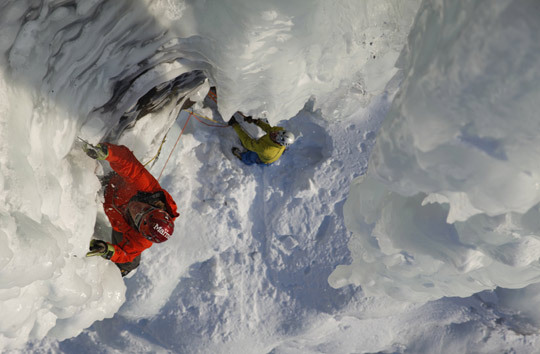
Albert Leichtfried on a WI7 climb in the Lyngen Alps of Norway. In February, Leichtfried and Benedikt Purner climbed about 10 ice flows in the area, fighting bitter cold temperatures and brittle ice. Unsure if the flows have been climbed before, they have given interim names to their routes. This one they called Roadside. [Photo] Klaus Kranebitter
Over a two-week period in February, Austrians Albert Leichtfried and Benedikt Purner traveled to Lyngenfjord in northern Norway to explore icefalls in the Lyngen Alps. The result was a series of impressive ascents, including a WI7 and WI7-.
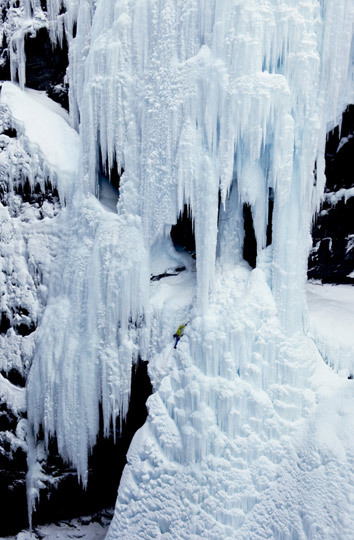
Storfossen (WI7- X, 150m), Spesiell Canyon, Lyngen Alps, Norway. [Photo] Klaus Kranebitter
Unsure of what they would find in Lyngen, they took a chance after speaking with Graham Austick, owner and manager of Lyngen Lodge. Austick provided old photos and arcane directions to the icefalls, many of which required two-hour approaches on snowshoes. Leichtfried and Purner remain uncertain about which climbs are new ascents, and which are repeats. But, finding no traces of previous parties, they named and graded the icefalls they climbed.
A year before, Leichtfried took a similar trip, but unusually high temperatures and poor conditions shut out his hopes for climbing ice. This year, he found the opposite: bitter cold, ranging from -8 to -22 degrees C, created brittle and challenging conditions, particularly on overhanging ice. But the fragility did little to slow them down.
Leichtfried and Purner climbed Startfossen (WI4, 60m) on their first day, then Gullyvers Reisen (WI5, 130m) on Day 2. On the third day they took a ferry across the fjord to Lyngseidet and climbed two routes: Goldrush (WI5+, 200m) and Rapunzel (WI5, 230m). On the fourth day they fought through a snowstorm and climbed the thin Manner mag man eben (WI5+ M6, 120m) in the heart of Spesiell Canyon. After lots of vertical in the extreme cold, they decided to take a rest day.
While in Spesiell Canyon they discovered and returned to what they believe are two new lines. First they climbed Kalteschock (WI6 X, 80m), a precarious route with numerous free-standing sections, then Storfossen (WI7- X, 150m), which involved even more dangerous climbing as ice hung freely off the wall. They climbed both carefully but rapidly. The following day, foregoing respite, Leichtfried and Purner climbed Roadside (WI7), an extremely demanding route that snaked its way through swaths of free-standing ice and pushed through an overhang.
After so much snowshoeing and post-holing, the next day the Austrians took a small 50-horsepower fishing boat to the other side of the fjord to climb Lyngen Magig (WI5, 120m) in perfect conditions. They returned that evening, soaking in the colors of the northern lights.
“This time we had as much luck with the weather as we had bad luck last year,” Leichtfried said. “The trip to Lyngen proved to be one of the most intensive, impressive and successful I’ve ever been on.”
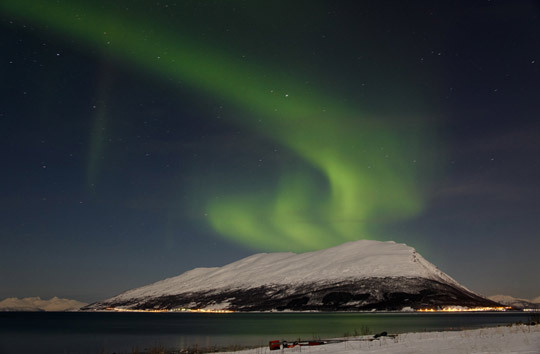
Northern lights over Lyngenfjord, Norway. [Photo] Klaus Kranebitter
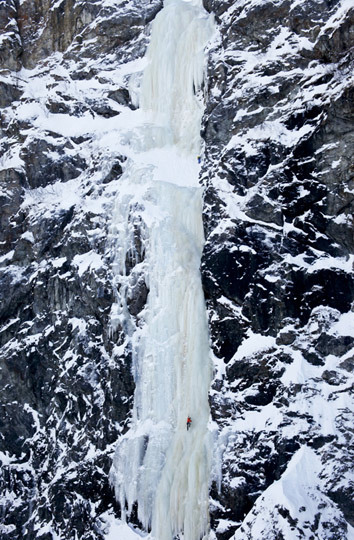
Leichtfried on Goldrush (WI5+, 200m), Lyngseidet, Lyngen Alps, Norway. [Photo] Klaus Kranebitter
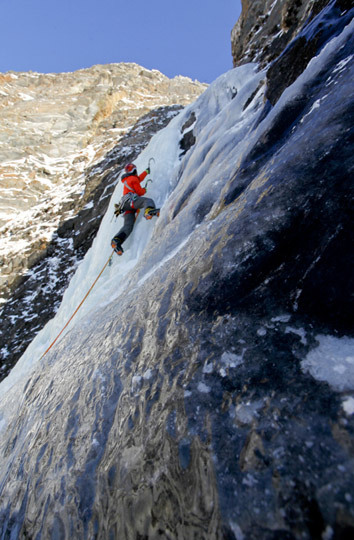
Leichtfried on Startfossen (WI4, 60m), Lyngen Alps, Norway. [Photo] Klaus Kranebitter

Leichtfried and Purner eye Lyngen Magig (WI5, 120m) from Lyngenfjord, Norway. [Photo] Klaus Kranebitter
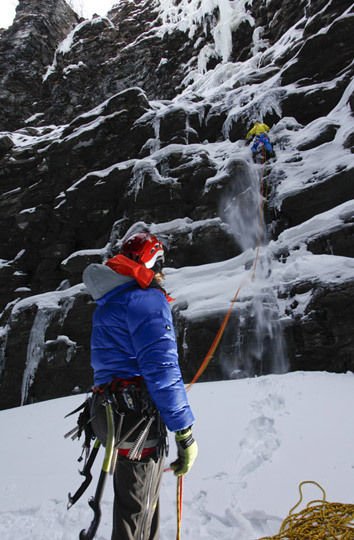
Leichtfried belays Purner on Kalteschock (WI6 X) during another cold day in the Lyngen Alps, Norway. [Photo] Klaus Kranebitter
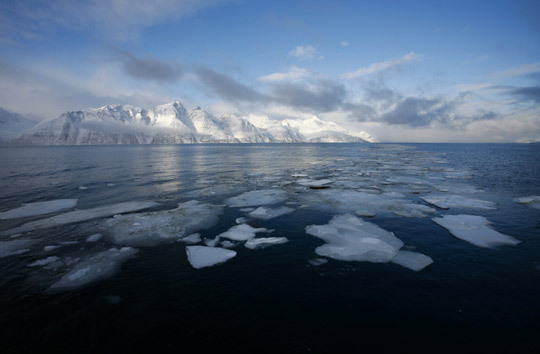
Lyngenfjord, Norway. [Photo] Klaus Kranebitter